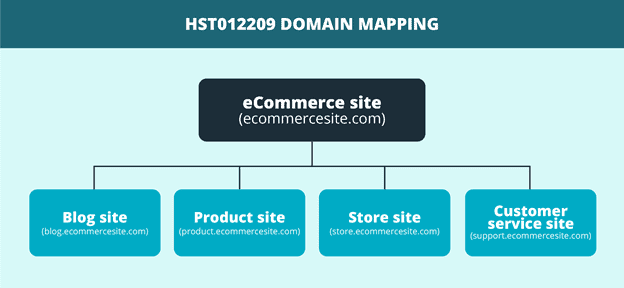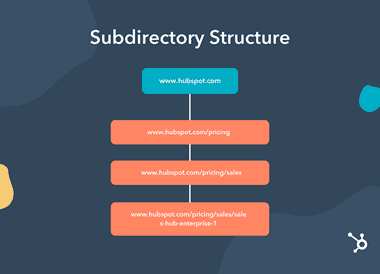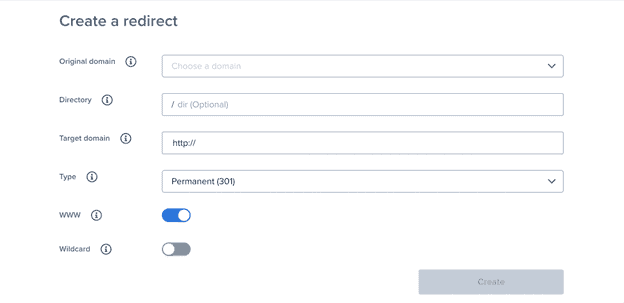
07 Feb What Is Domain Mapping and How to Incorporate It on Your Websites
Are you running a few custom domains? Do you have an eCommerce store with a few landing pages and are considering expanding even more?
If so, you might have thought about domain mapping to optimize your website’s structure. Domain mapping enables you to redirect traffic between subdomains while still keeping content organized easily.
But what exactly is domain mapping, especially WordPress multisite domain mapping, and how is it different from other solutions like redirecting or creating subdirectories?
Read on to find out more:
Redirecting vs. Domain Mapping
Domain Mapping: Common Problems To Be Aware Of
Final Thoughts: What Is Domain Mapping and How To Use It Effectively
Table of Contents
Domain Mapping
Domain mapping involves planning out the structure of webpages in the same domain in a uniform style, so your server can easily redirect between subdomains and subdirectories. Unlike a simple redirect, domain mapping requires a consistent structure on one WordPress installation or website.
 You need to set up rules to ensure the mapping works as desired. For example, you need to format your websites with a consistent style. You can’t have one organized by date and another by content name.
You need to set up rules to ensure the mapping works as desired. For example, you need to format your websites with a consistent style. You can’t have one organized by date and another by content name.
If you have multiple websites related to one main domain, mapping can help make navigation easier in the long run. It also makes it easier to make changes to all of your subdomains at once. So you can stay consistent in your brand updates.
Domain Mapping — Main Domain and Subdomains
At the top of your domain map, you have your main domain: www.example.com. Any Subdomains (store.example.com) or subdirectories (example.com/store) you create lie under it.
Your eCommerce store will still be at example.com. But by creating a separate subdomain with your Domain Name System (DNS) name server, you can have the content in that subdomain stored separately in DNS records at your domain registrar from content like your blog and customer service pages.
While the subdomains and subdirectories may have their content and settings, they are all managed in the same WordPress installation and have a similar structure for posts.
 You can consider the main domain as a folder on your computer. For example, let’s assume the downloads folder in your computer is a top-level domain. You may divide the downloaded content into subfolders such as videos, programs, and documents for easier navigation. You can consider those your subdomains or subdirectories.
You can consider the main domain as a folder on your computer. For example, let’s assume the downloads folder in your computer is a top-level domain. You may divide the downloaded content into subfolders such as videos, programs, and documents for easier navigation. You can consider those your subdomains or subdirectories.
Domain Mapping: Benefits
Like folders on your computer make it easier for you to find your files, organizing your website makes it easier for users to navigate your website. Subdomains and subdirectories can be super-specialized and tailored to the needs of users. You can have subdomains for sales and customer service. Or you can create different subdomains based on language or geographical area.
While these subdomains focus on different content, they remain connected through your main domain and provide consistency between your websites and content. As you map domains, you also set uniform rules. For example, website navigation may follow a specific structure, with posts following rules like www.example.com/blog/post-name and store.example.com/sale/product-1.
This provides a clear structure on your primary domain’s front, and back ends. Besides that, subdomains still live under the large domain. You can manage them with the same login.
This saves you the time it takes to switch between multiple accounts. And you have the freedom to have these subdomains appear as unique as you like.
An Example of Domain Mapping
 Now that WordPress domain mapping is a little clearer let’s look at an in-depth example to see how you can use it in your website and why you should incorporate it.
Now that WordPress domain mapping is a little clearer let’s look at an in-depth example to see how you can use it in your website and why you should incorporate it.
Say you run an eCommerce company and sell digital goods online. You have your main WordPress site — ecommerecesite.com — landing pages for top-selling products and then a few subdomains for your main pages.
You can have a structure like:
- Blog website (blog.ecommercesite.com)
- Product website (product.ecommercesite.com)
- Store website (store.ecommercesite.com)
- Customer support website (support.ecommercesite.com)
Each of these domains is still associated with the main domain of www.ecommercesite.com. But each website serves a specific purpose, simplifies navigation, and offers consistency among the individual domains.
It helps you shorten the website’s URLs with addresses like product.ecommercesite.com/new and store.ecommercesite.com/new, leading to unique pages. This makes addresses easier for visitors to remember and share.
WordPress multisite domain mapping can help improve conversions and capture leads and traffic as you can tailor each subdomain to the relevant target audience based on their needs and behavior.
With behavioral targeting tools, you can follow up with customers based on the subdomains they visit. A visitor of support.ecommercesite.com will receive a different marketing email than a visitor of store.ecommerecesite.com.
Subdomain vs. Subdirectory
We have used subdomains and subdirectories interchangeably so far, but the two concepts work a bit differently. Here’s how they differ from each other.
Difference in Structure
Both subdomains and subdirectories can be used for domain mapping. The main difference is how your URLs are structured and stored information.
Subdirectory Structure
Subdirectories organize information vertically. This creates a hierarchy of data.
Consider ecommercesite.com/store/sale/summer. We have store as a subdirectory of our eCommerce website, which further has a subdirectory of sale. In sale, we have a subdirectory of summer that contains summer products on sale.
You could also have the subdirectories fall and winter besides summer. These would both be under store subdirectory and would be equal to summer.
 Subdomain Structure
Subdomain Structure
A subdomain sits below your top-level domain and provides a horizontal information organization. For example, blog.ecommercesite.com and support.ecommercesite.com would be at an equal level in your website’s structure. You can add subdirectories to each of these, completely separate.
Subdomains are treated as different websites by search engines. This can be useful if you use a subdomain for staging purposes, but keep this in mind when building your SEO strategy.
 Subdomain vs. Subdirectory — When To Use Which?
Subdomain vs. Subdirectory — When To Use Which?
Both subdomains and subdirectories can be used in domain mapping. They provide a different value for SEO. The right structure for your subsites depends on your content goals.
Use Subdirectories For
Subdirectories are best for organizing:
- Information similar to the parent domain
- Small groups of data
- Related content
Subdirectories are often used by Software as a Service (SaaS) companies with a few related software items or apps.
Product and pricing pages and other related content work well as subdirectories. A user looking at your products will eventually want to see the prices of the different options. Storing them in subdirectories makes more sense than in different subdomains.
If you need to create new custom pages, you can do so with the subdirectory structure using a free squeeze page builder. This makes it easy to add new pages and convert more leads while maintaining an easy-to-navigate website.
Use Subdomains For
Subdomains are best for:
- Websites with different functions — blog, store, or customer support
- Unique customer experiences
- Large groups of data — to store similar information and topics together
For example, your eCommerce website will have a store and a blog. And the users visiting each will have different goals.
Blog visitors are probably still at the top of the sales funnel, researching products and trying to determine which product is best for them. Visitors navigating your store will be ready to purchase and prefer going directly to the product pages.
You can use subdomains of store.ecommercesite.com and blog.ecommercesite.com to make it easy for your audience to get the main purpose of the content.
In particular, blogs deserve a separate subdomain. Blogs can have hundreds of posts, images, and videos. Many have multiple subdirectories. Keeping the blog on its subdomain can keep all of this information contained and separate from your store or service center.
Redirecting vs. Domain Mapping
A common misconception is that domain mapping is like redirecting. Redirecting involves one webpage automatically pointing your subdomains to the main domain or another website.
Redirecting can work with a dissimilar URL structure. You can purchase the domain of ecommercesite.net and have it redirect to your main URL of ecommerecesite.com.
Browsers will take the users entering the .net to the .com version of the website when you have the redirect in place. But .net and .com examples are completely different domains. There is no subdomain relationship between the two. Two different people or organizations can own and run them independently.
Redirecting doesn’t involve domain mapping or shared structure. You can redirect multiple URLs to a single page — it’s handy if people commonly mistype your address.
 When to Use Redirecting
When to Use Redirecting
Redirecting is easy to set up. There are only a few rules to follow. Depending on your web host provider, you can usually set it up in a minute or two. This is a great option if you have recently changed your website domain name and redirect traffic to your new site address.
However, redirecting can be confusing. Visitors may wonder why typing in shoppingiseasy.com leads them to ecommerecesite.com. It’s harder to track issues, and navigation can become difficult.
Redirecting is a decent solution for temporary issues, but it might not be the best solution for your website long term. As each redirect can be between different domains, you’ll need a new SSL certificate for each of the new domains too.
If you decide to use redirecting on some of your domains, make sure to have a way to capture feedback from users and direct them to the best answer.
When to Use Domain Mapping
Domain mapping improves customer experience and makes it easier for customers to find content. You have all your blog content in one place and all your customer support in another place. If you are a network admin, you will have an easier time managing a website with proper domain mapping than a website without domain mapping.
Domain mapping also:
- Provides brand consistency
- Establishes uniform domain structure
- Improves navigation for customers and developers
You can also monitor issues in one place to connect all of these subdomains and subdirectories in one WordPress installation.
Domain Mapping: Common Problems To Be Aware Of
What’s the catch? Domain mapping can be time-consuming. It’s a resource-heavy task that requires more technical experience, making it difficult for beginners.
You might also need a support team to help you maintain all the subdomains and subdirectories depending on the size of your website. Look at your website’s current structure, both on the front and back end or Cpanel, to determine if setting up domain mapping makes sense for you.
You can also set up analytics software to measure your site’s performance, both before and after domain mapping, to see the results in action.
Final Thoughts: What Is Domain Mapping and How to Use It Effectively
WordPress domain mapping is a great way to achieve an easy to navigate, well-organized group of websites. While it takes effort initially, it provides a smooth experience for your customers and creates a professional-looking network of subdomains and directories.
Learning the different ways you can structure your domain will help you set up the best multisite network for your business and clients. For more ways to grow your WordPress website, tutorials, plugin recommendations, and ways to expand your skills, check out our blog for dozens of articles and how-to’s from our team of experts.



No Comments